Big Bone Lick State Historic Site in northern Kentucky has lots to offer the history buff and outdoor enthusiast alike. Plus, visit the on-site bison herd!
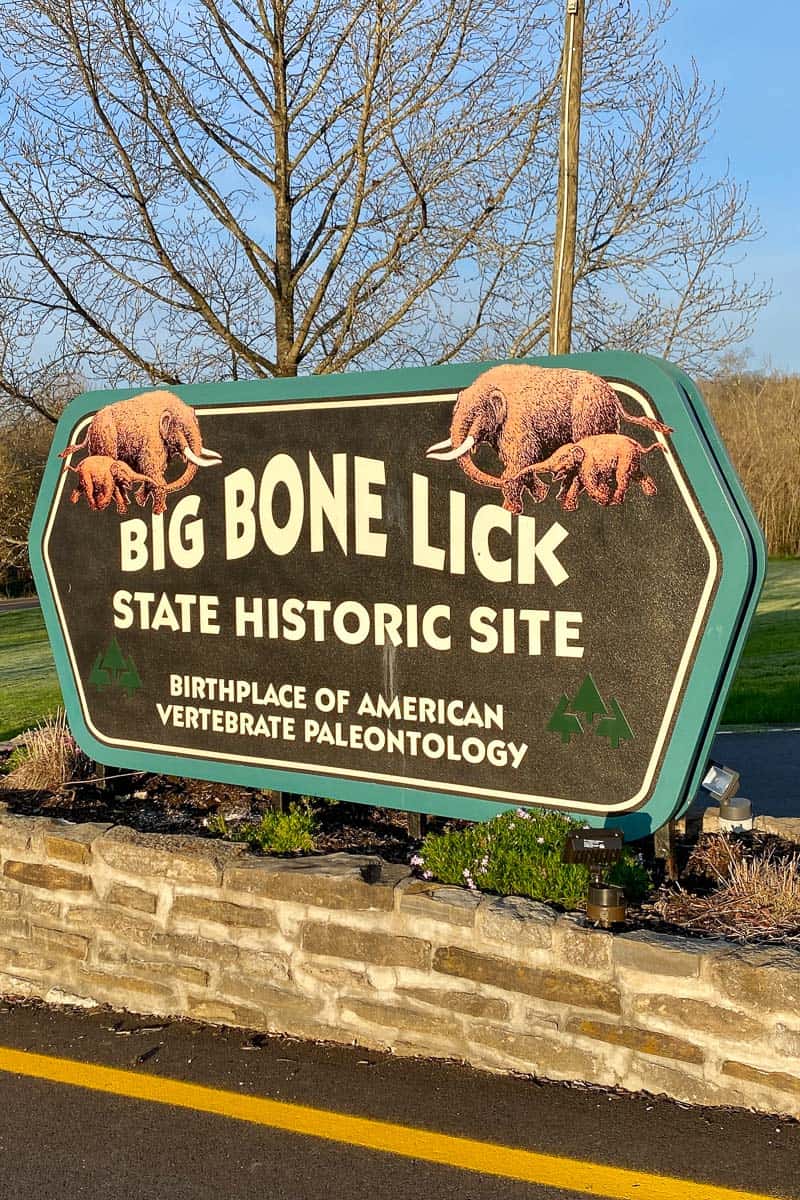
Over the past several years, we've embraced the weekend getaway.
After all, in every state there are parks and attractions to explore. And since they're right there in our backyard (so to speak), it's pretty easy to pack up and head out for a change of scenery.
Kentucky has a wealth of state parks, including Carter Caves, Kincaid Lake, and Natural Bridge. Recently, we decided to check out Big Bone Lick State Historic Site, in the northern part of the state.
It has a few interesting claims to fame! Here's what we found.
Getting to the Park
The park is about an hour from Cincinnati, and is close to the I-71 corridor.
If you plan to camp and need to pick up supplies, nearby cities like Walton and Florence are good for grocery shopping.
The drive in to the park was beautiful, with horse farms and well-manicured fields!
Check the park website for announcements, maps, and recreation ideas.
Looking for mountain bike trails in the area? We recommend England-Idlewild Park in nearby Burlington! For skiing, head to Perfect North Slopes.
What Makes Big Bone Lick State Historic Site Unique?
When you drive into the park, the first thing you'll see is a sign which proclaims this is the "birthplace of American vertebrate paleontology."
What does it mean?
Thousands of bones and fossils, including those of long-extinct animals like the mastodon and the wooly mammoth, have been found here.
Native American populations were familiar with the site, and European explorers discovered it in the 1700's.
Most famous among its early visitors were Lewis and Clark, who visited the area separately before and after their big western expedition.
When William Clark conducted an excavation here in 1807 and sent the bones to President Thomas Jefferson, it opened exciting fields of study in the new science of paleontology.
Today, you can still see fossils at the park, as well as dioramas to help you visualize the animals that once roamed this land.
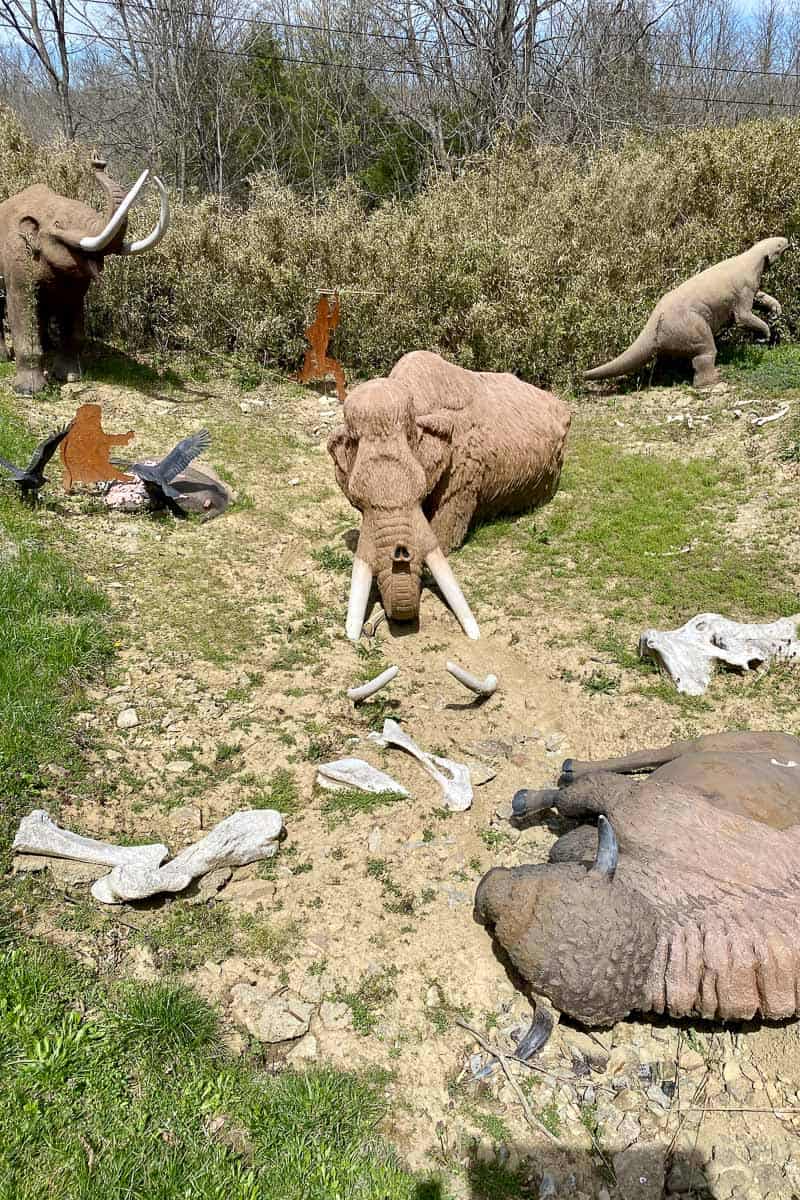
Human history is also on display, with Native American dioramas like the one pictured below.
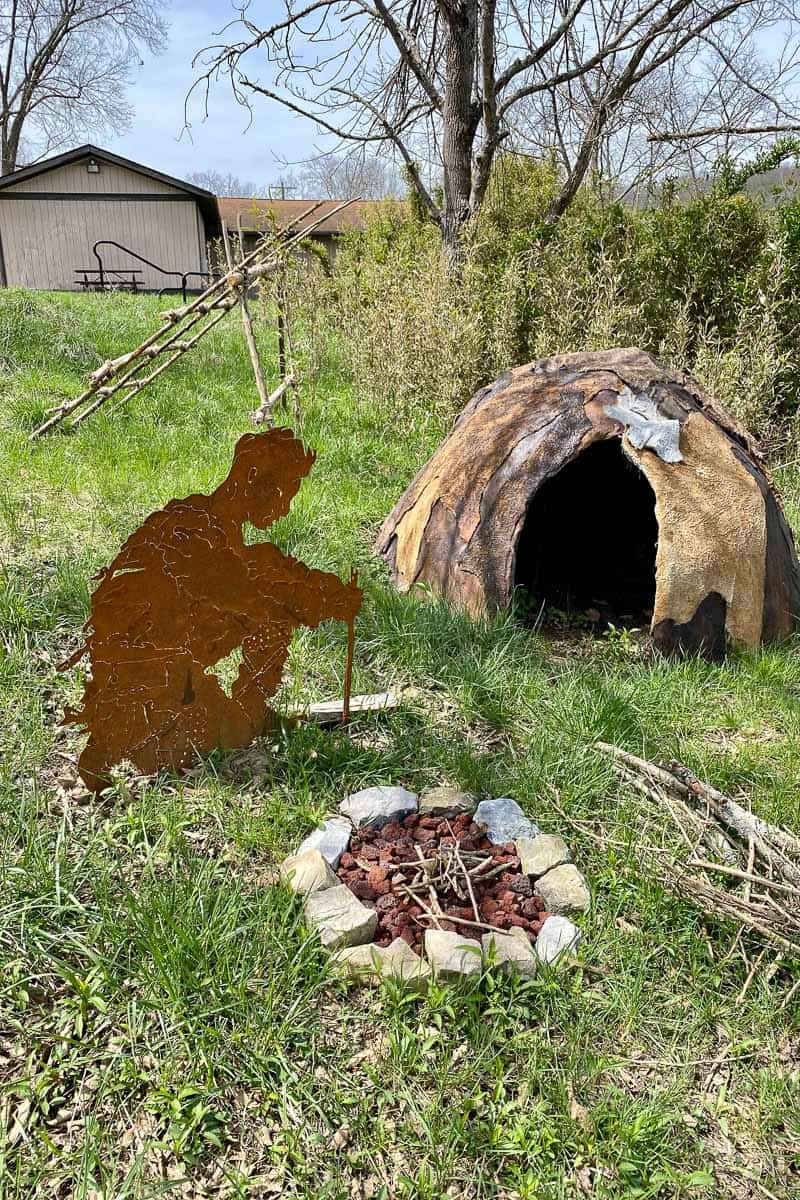
The dioramas are near the museum and gift shop.
Near the campground check-in, the original Baker Family Root Cellar typifies the kind of limestone structures that were built here in the 19th century.
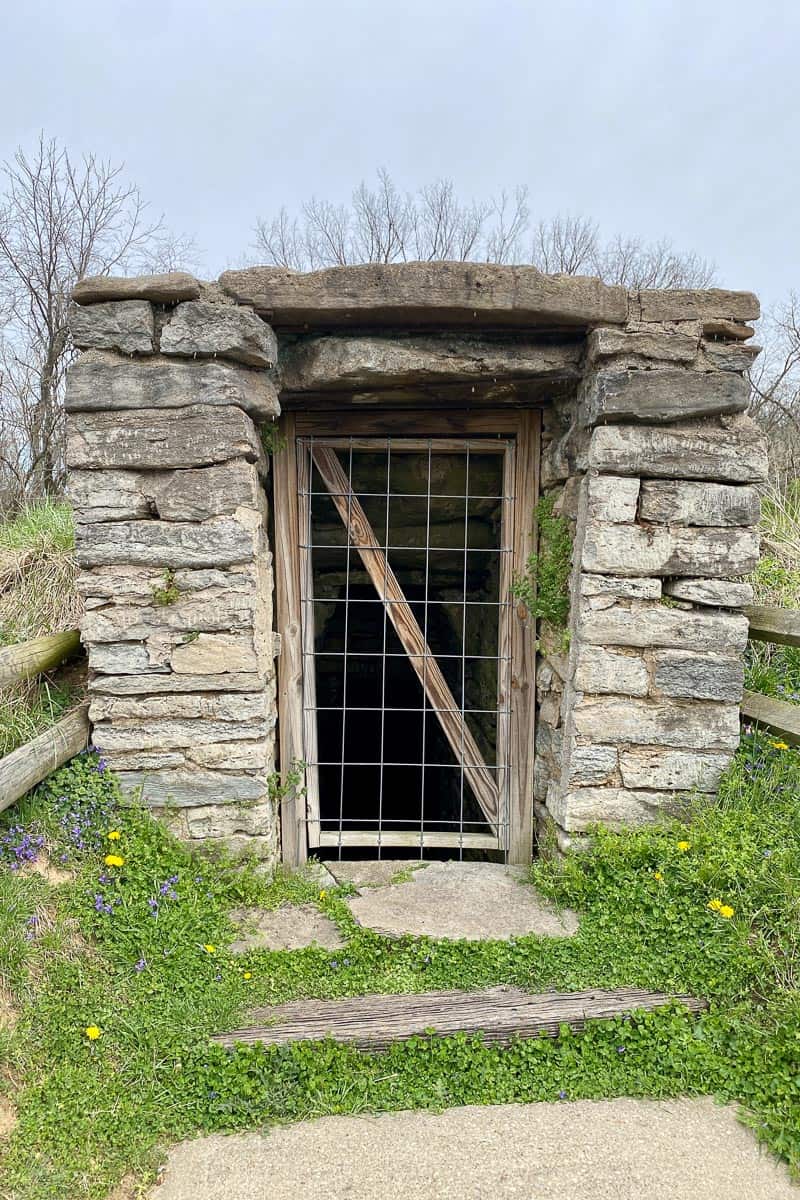
And, for those of us who had to read Follow the River in school, kidnapped settler Mary Draper Ingles was brought to this area in 1755 and then escaped from her Shawnee captors, walking for weeks to get back home. A sign at the park commemorates her story.
Big Bone Creek Trail
If you want to do some leisurely hiking while you're here, Big Bone Creek Trail is a good place to start.
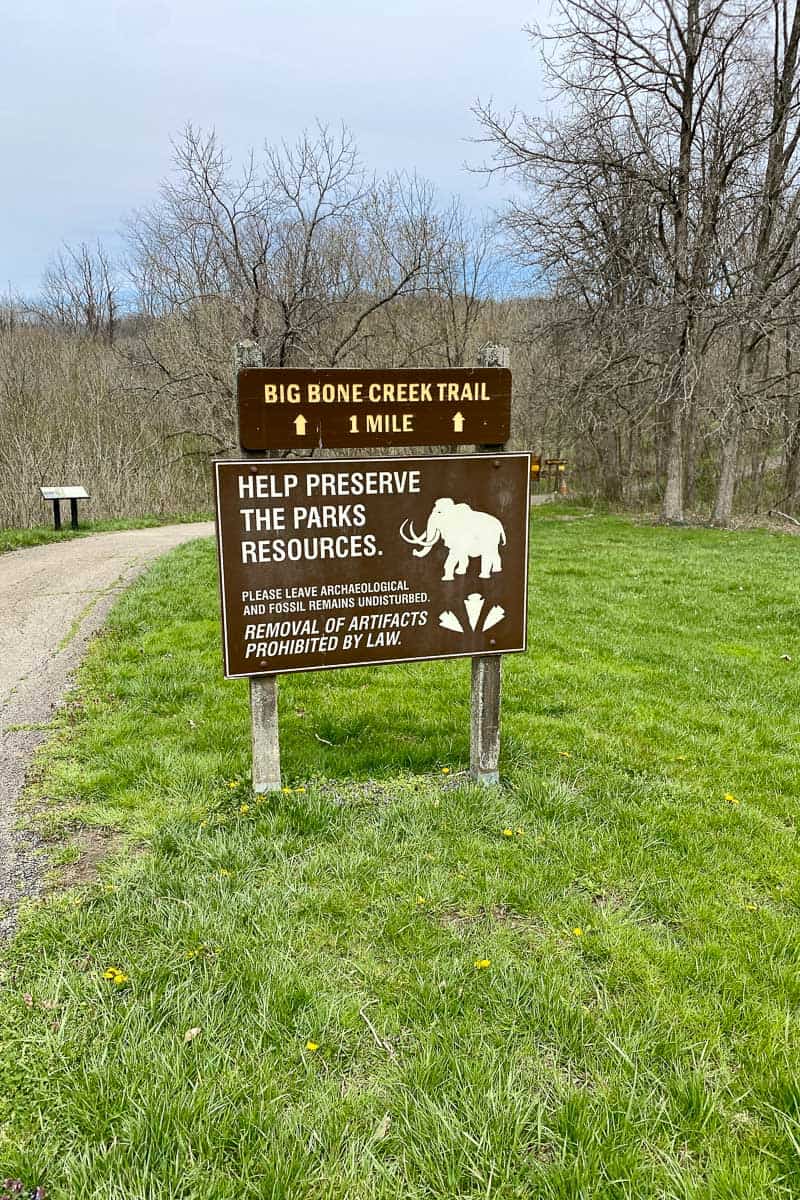
The trail is partially paved, just under a mile, and easy for walking.
There was a warning sign about it being slick and wearing good boots or carrying poles, but I’m guessing this is because pavement can get slick when icy. We do like to keep our Kelty trekking poles on hand, though.
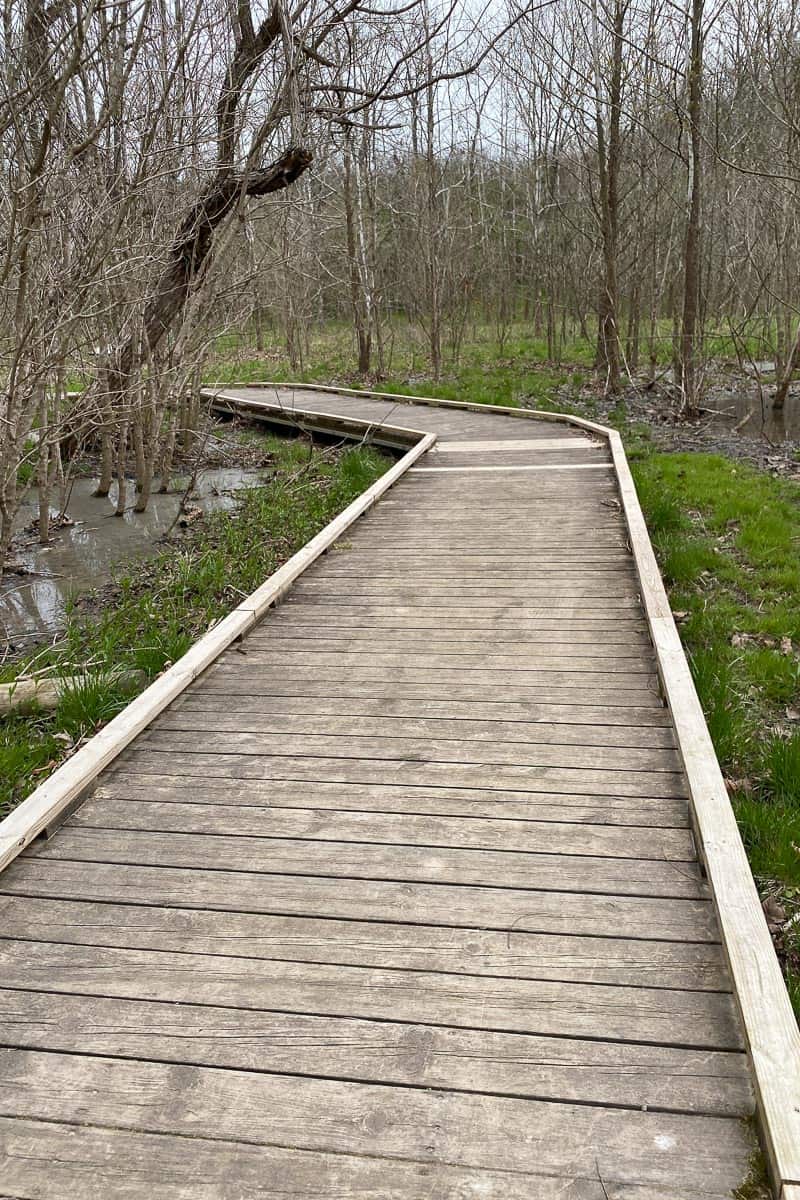
A spur of this trail will lead you to a salt spring.
Salt is an integral part of the history of this area, attracting all those prehistoric animals whose bones were later found here. And a salt industry operated here for decades.
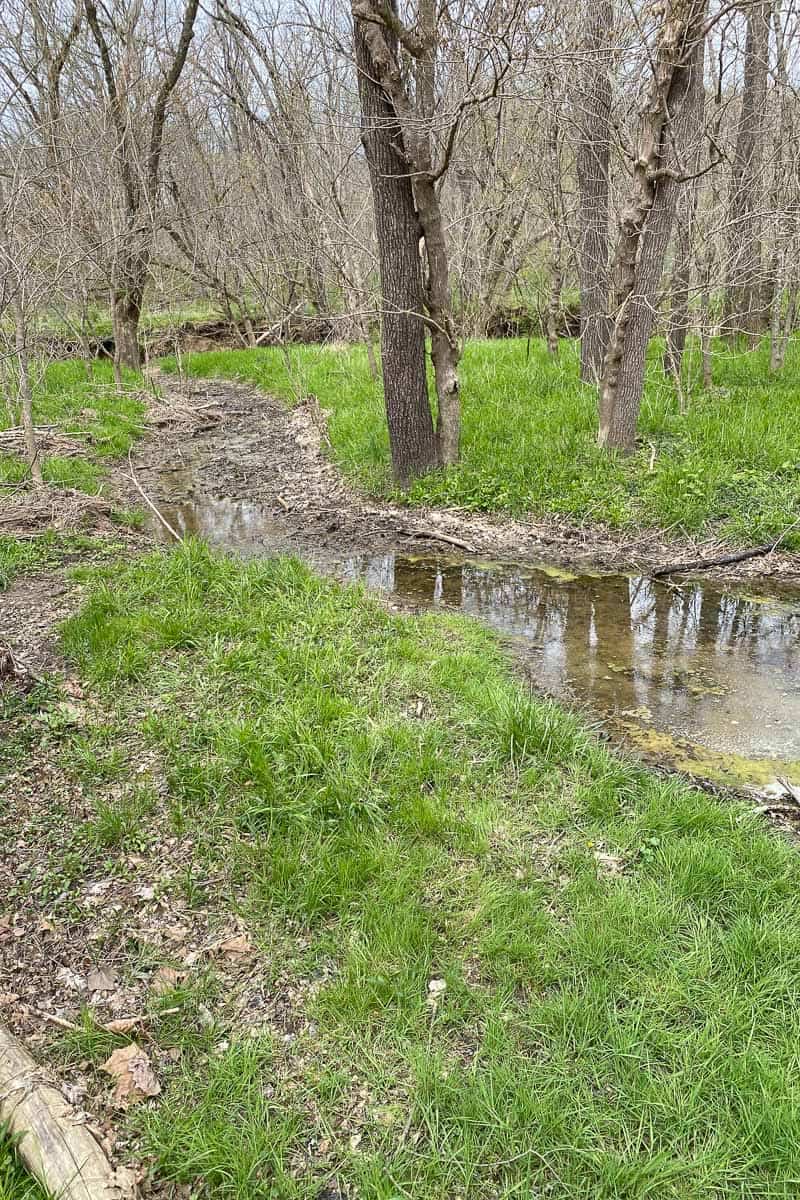
There's another trail near the campground called Coralberry Trail, which would take you around Big Bone Lake, but the lake and part of the trail are currently closed because of a leak in the dam.
Hiking to the Bison
One of the coolest things to see at Big Bone Lick State Historic Site is the bison herd.
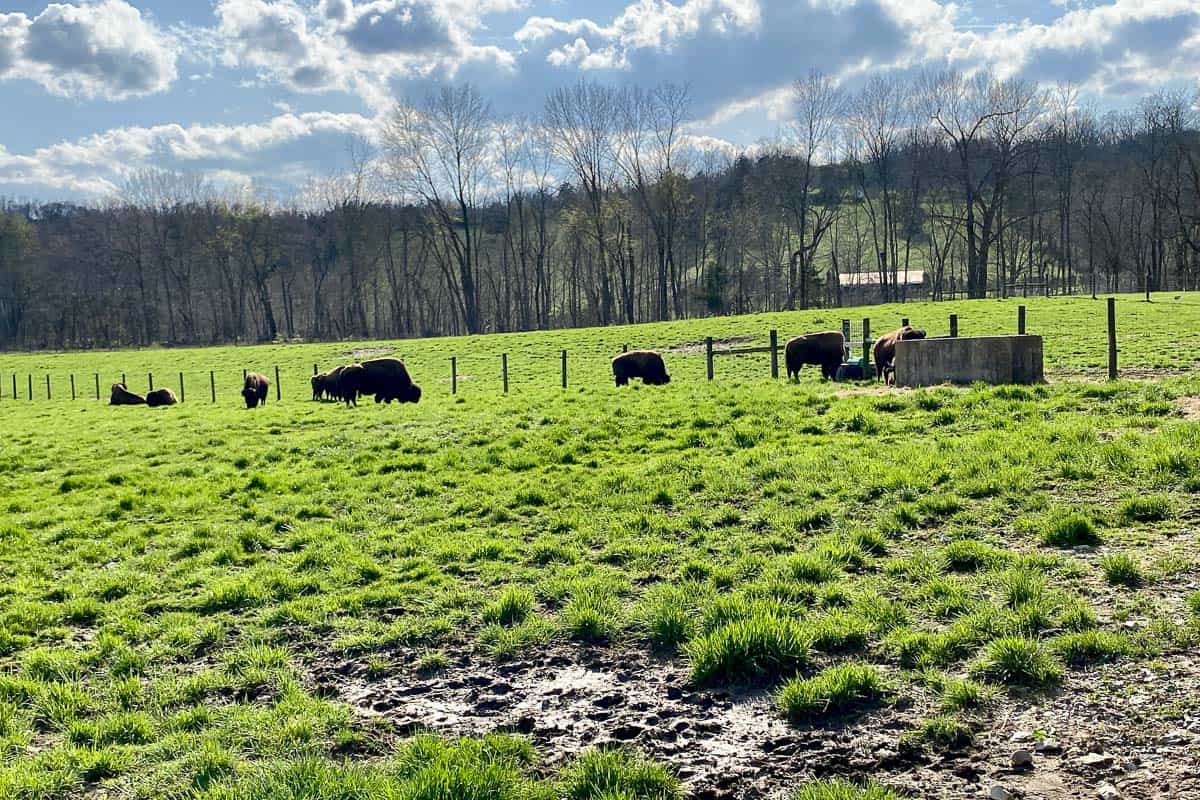
Although bison rambled this area freely hundreds of years ago, hunting practically eliminated them in the early 19th century.
As part of a park conservation plan, a herd has now again been established here, and you can check it out – from a distance.
It's about a half-mile hike from the museum and gift shop to the herd.
But there's more than one way to approach the bison area.
If you're staying in the campground, it's a slightly longer hike. You'll start from Gobbler's Trace Trailhead.
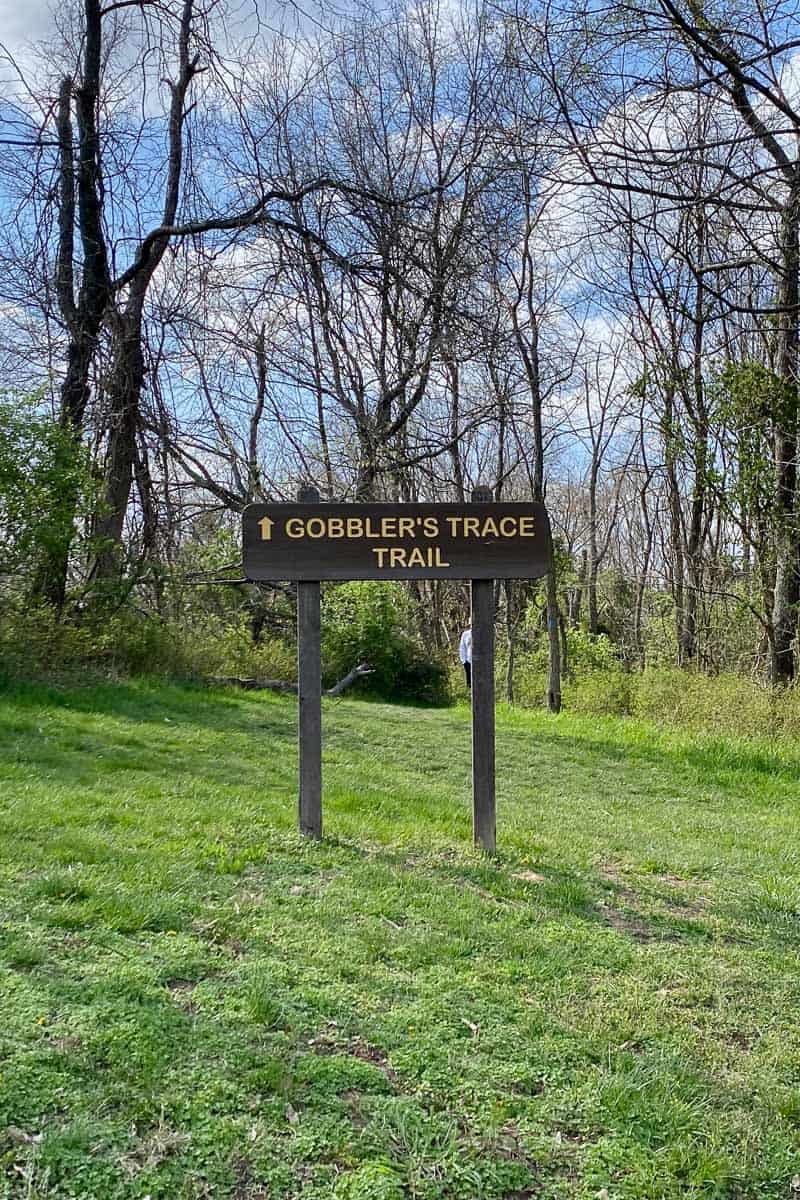
Gobbler's Trace was easy and mostly flat.
When we came to the intersection with Cedar Run Trail, we took it. (You can also just continue on the easier Gobbler's Trace if you want to! Either trail will take you to a spur leading to the bison field.)

Cedar Run was a moderately difficult trail with exposed roots, rocky terrain and some up-and-down on the hills.
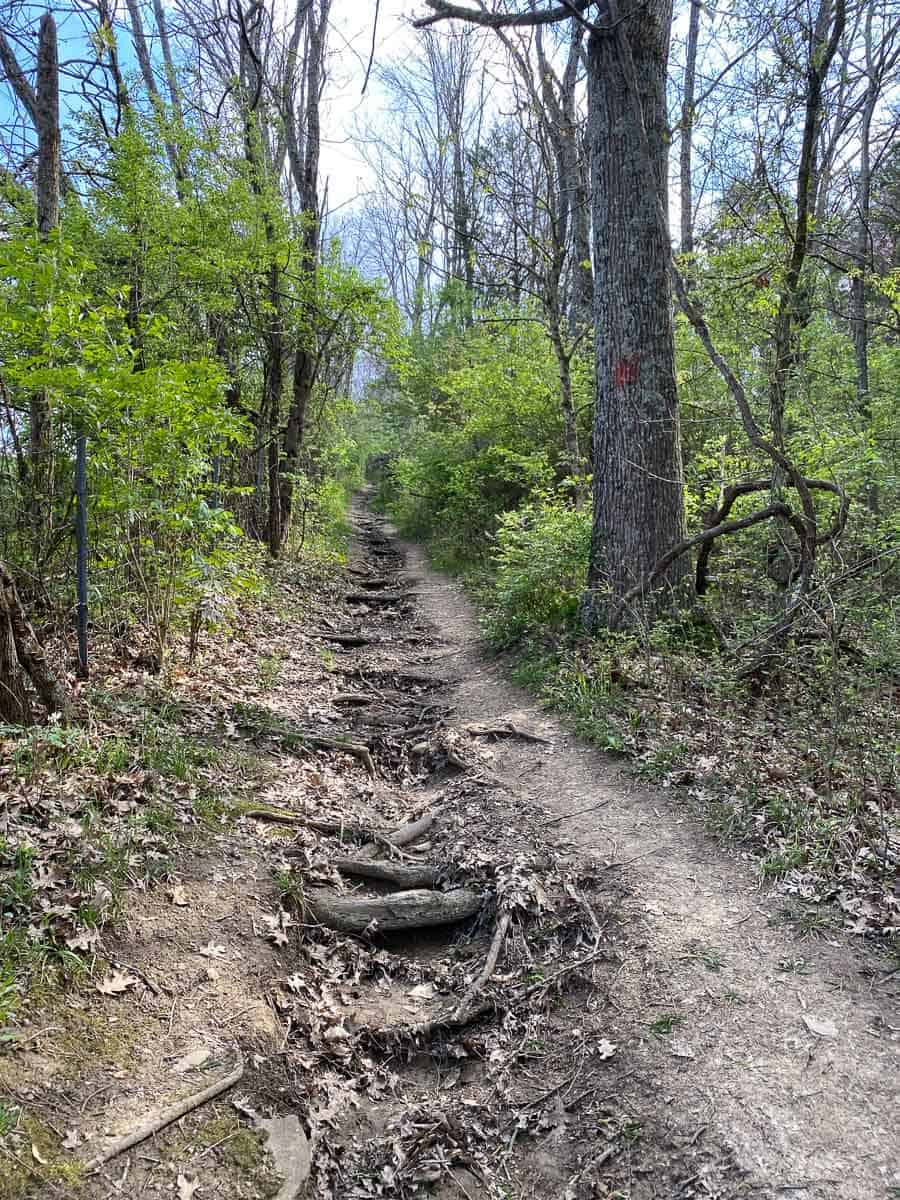
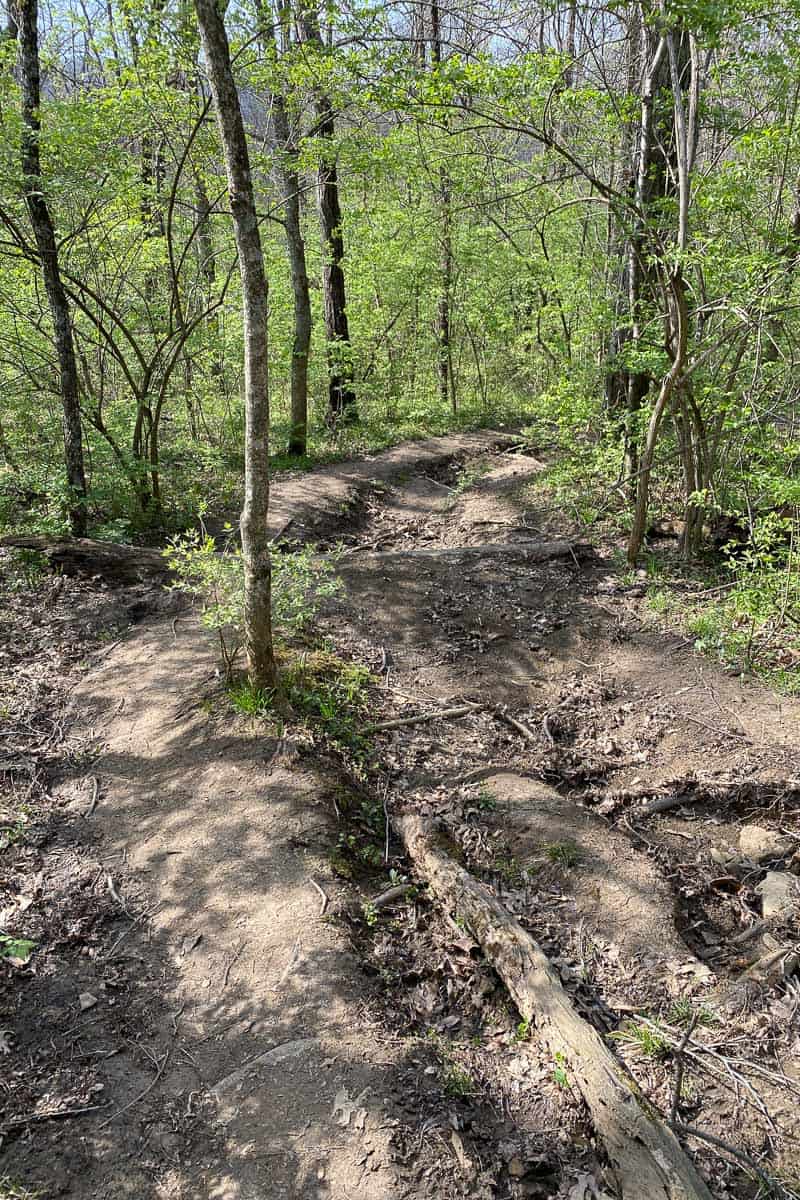
We took Cedar Run until we reached the spur that would take us to the bison herd.
This spur trail had some exposed roots but was still fairly easy.
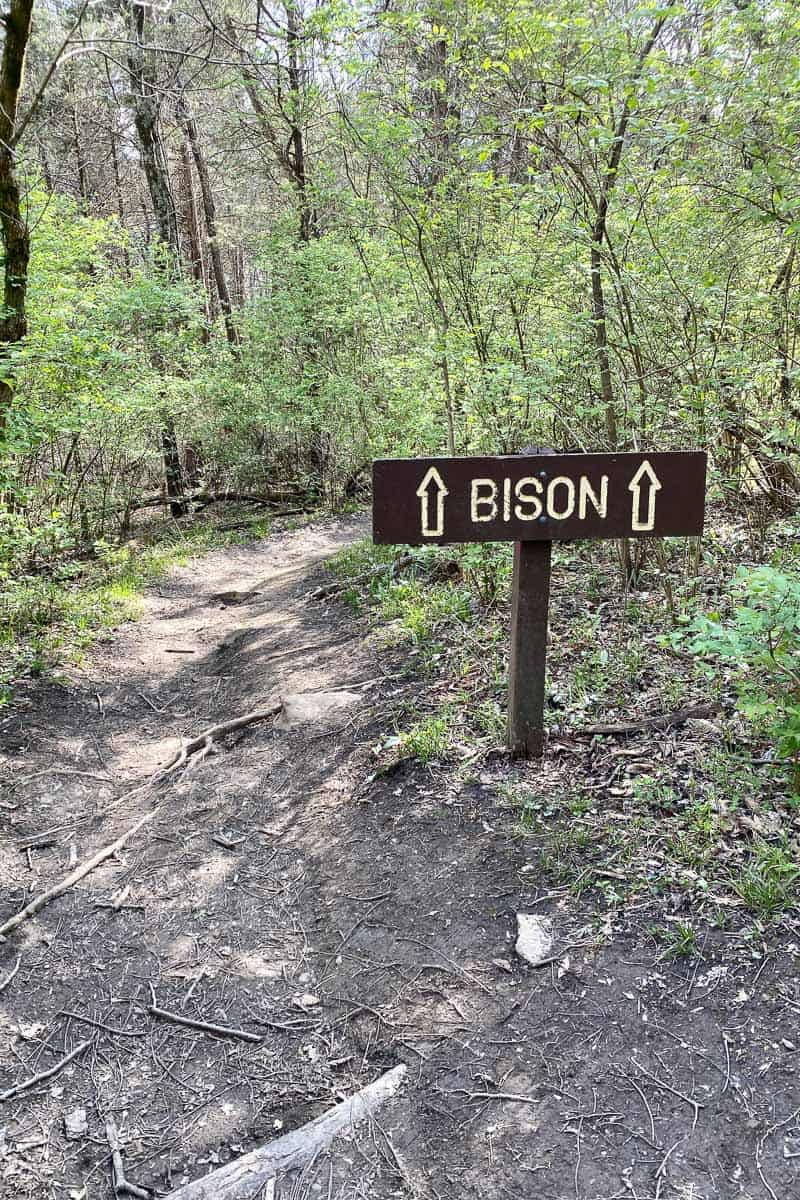
When you reach the bison herd area, you’ll see a large fenced-in field.
You cannot cross the fence, as this is not a petting-zoo situation.
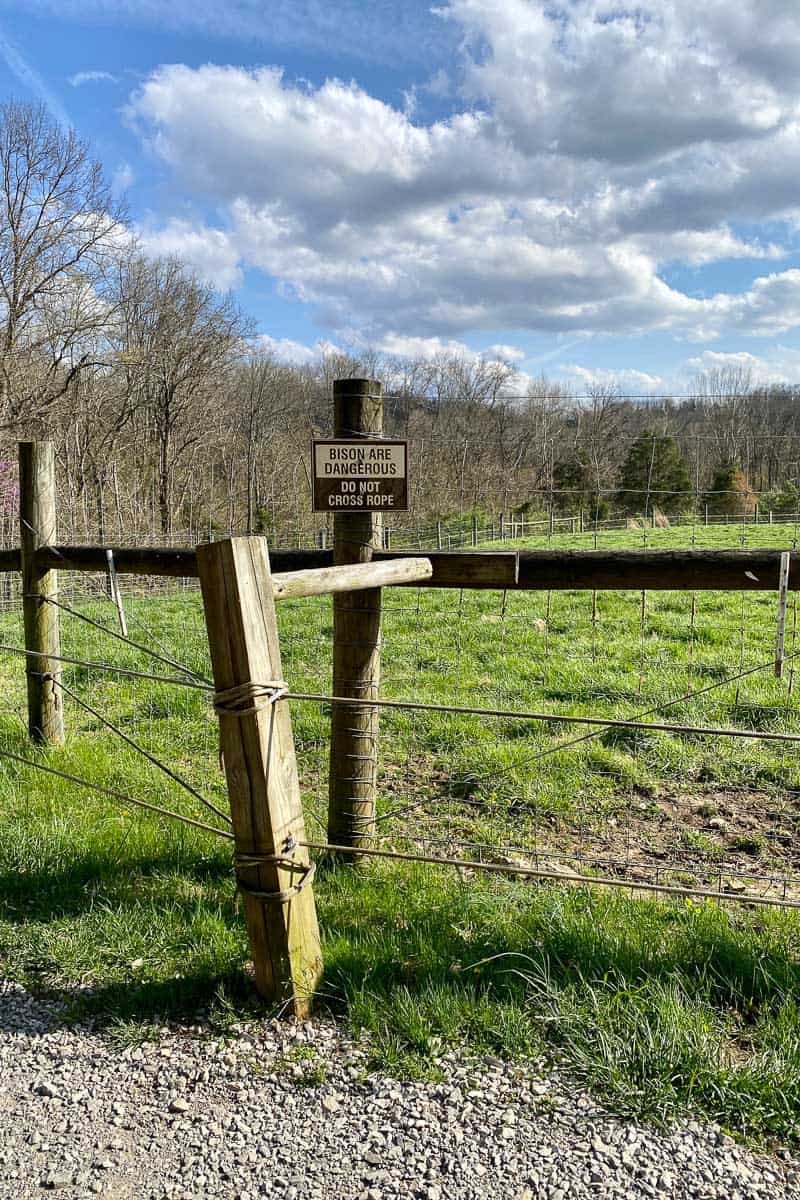
You’ll likely have to walk around the gravel pathway to locate exactly where the bison are hanging out.
Depending on where the herd is, you may or may not have a great view. (The gravel path only goes about halfway around the field.)
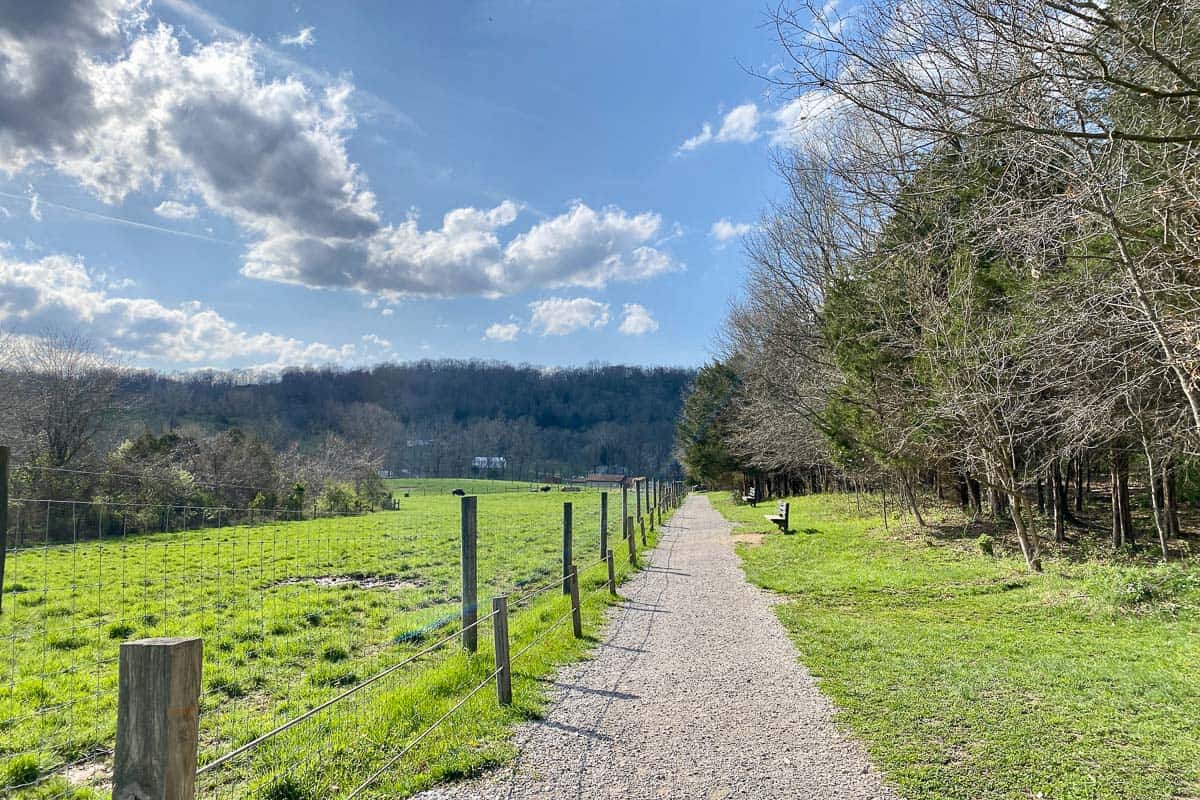
We got a pretty decent view, but they never came super close to the fence.
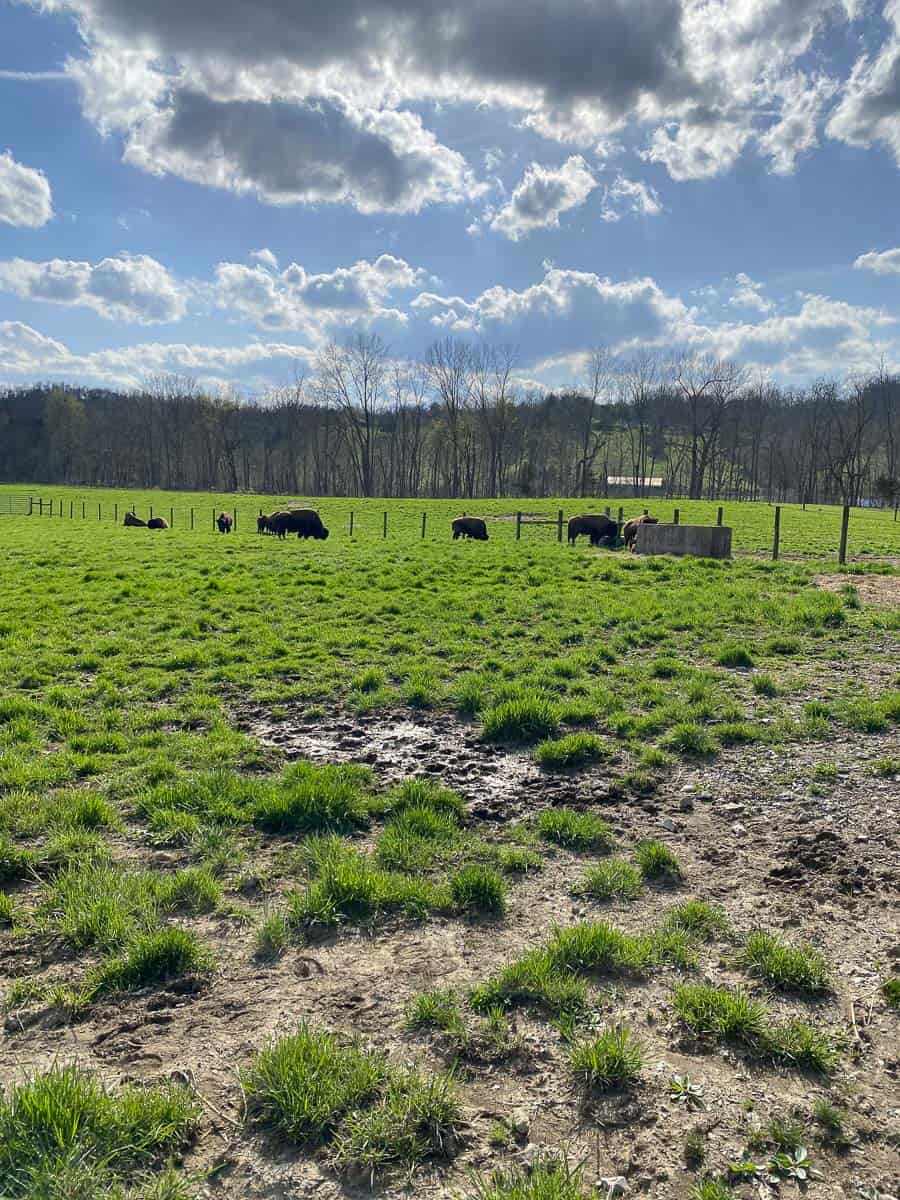
After leaving the bison spur trail, we decided to take the easier Gobbler's Trace path back to the trailhead, instead of returning on Cedar Run.
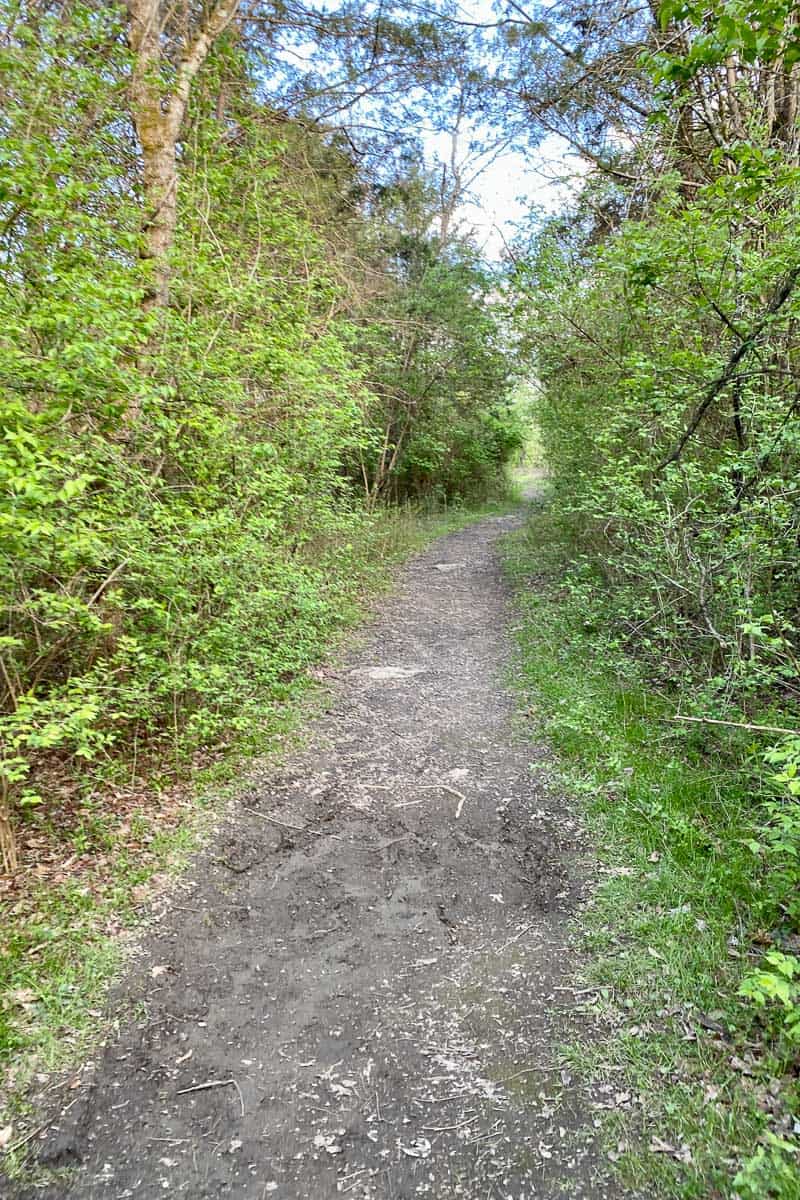
Looking for a great meal after a day of outdoor exploration? Try Hofbrauhaus Newport for German food and beer, Siam Orchid for delicious Thai cuisine, or Guru for amazing Indian meals.
Big Bone Lick State Historic Site Campground
We had decided to stay in the campground for this weekend getaway. You can reserve a site online.
There are 62 campsites with electric hookups. The campground store (which is closed in winter) had ice, firewood, and some basic supplies.
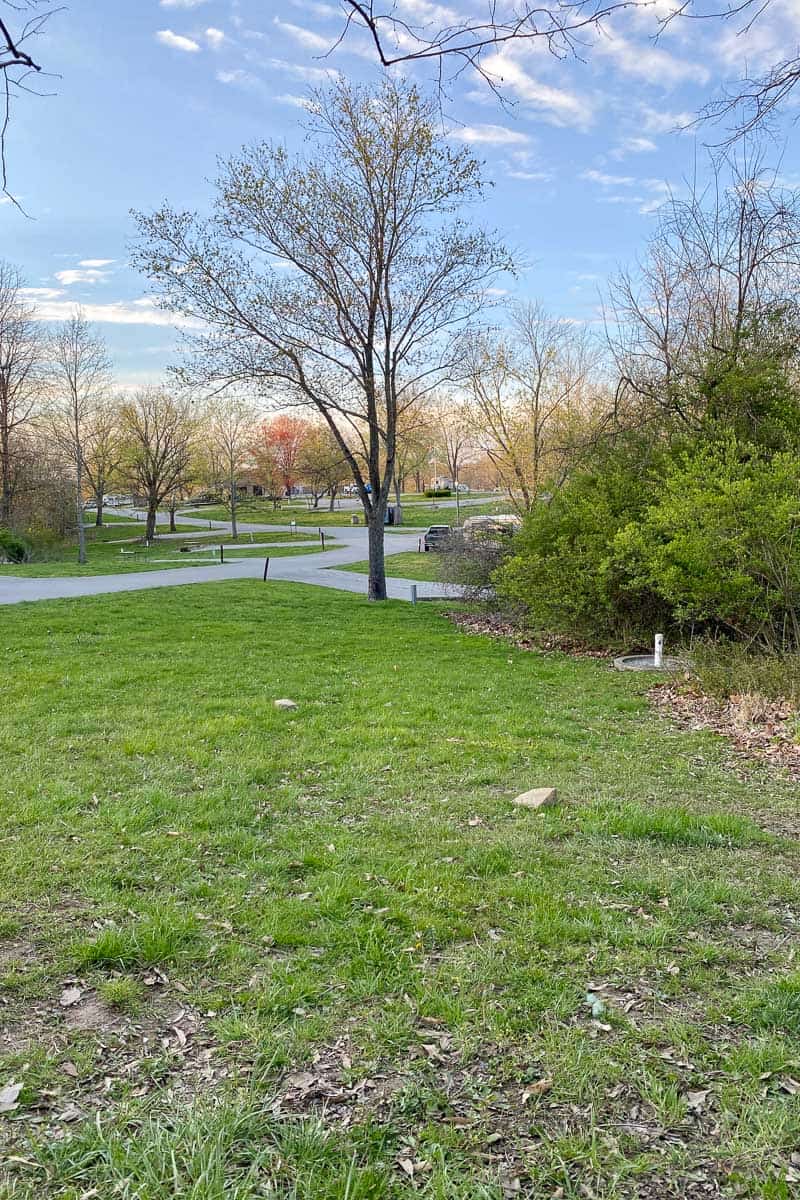
The spaces are large and nicely spaced apart.
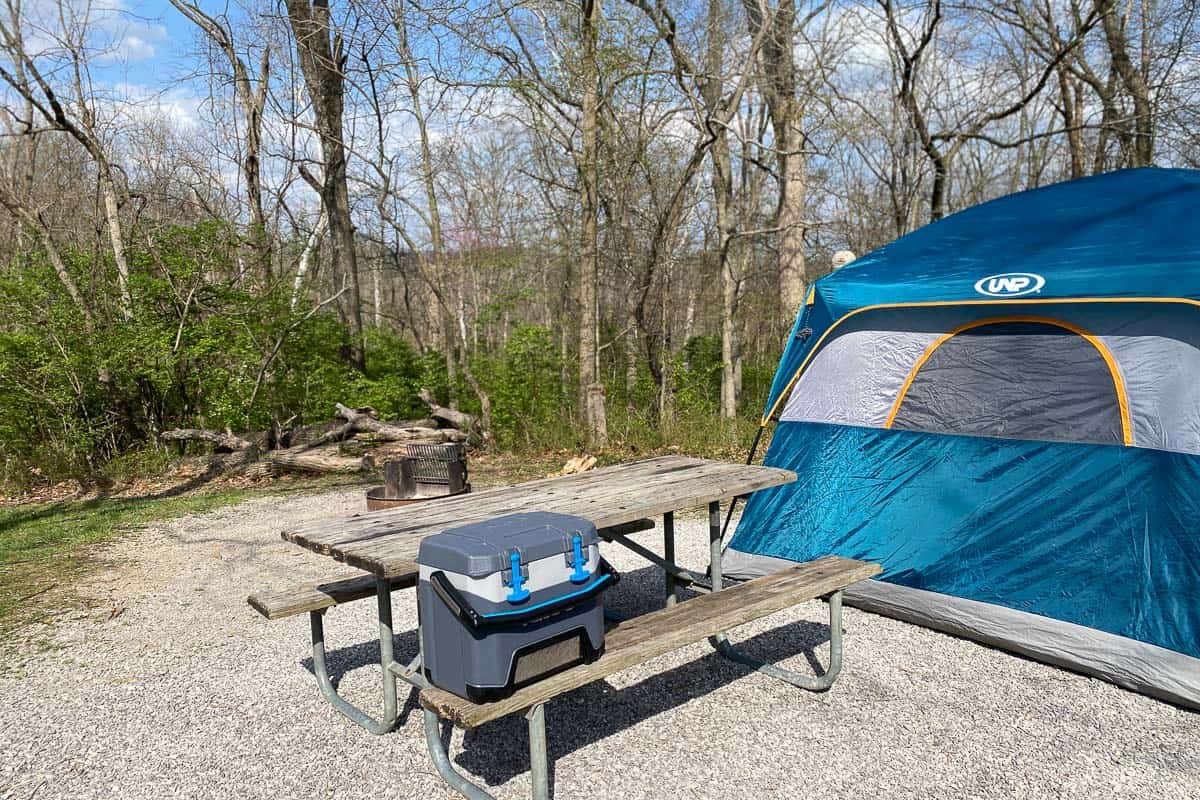
There's a centrally located building with restrooms, showers, and laundry facilities.
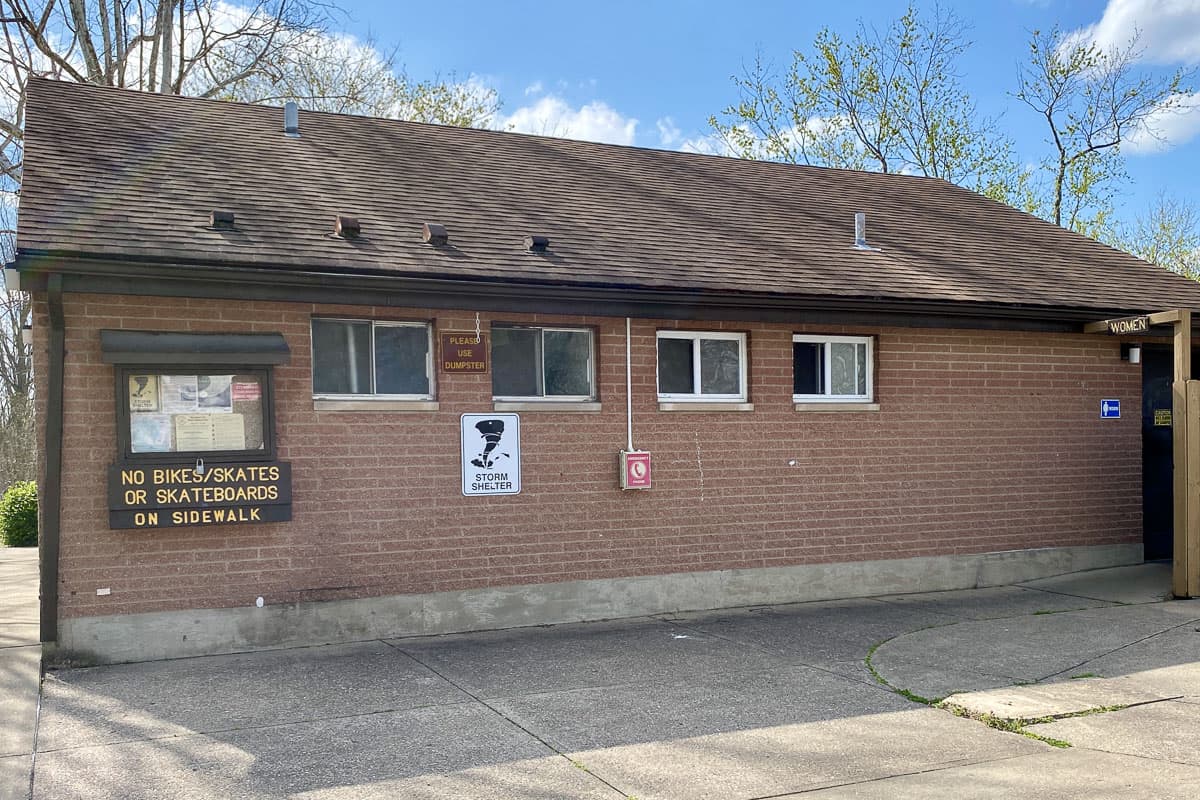
The restrooms and showers were nice and clean!
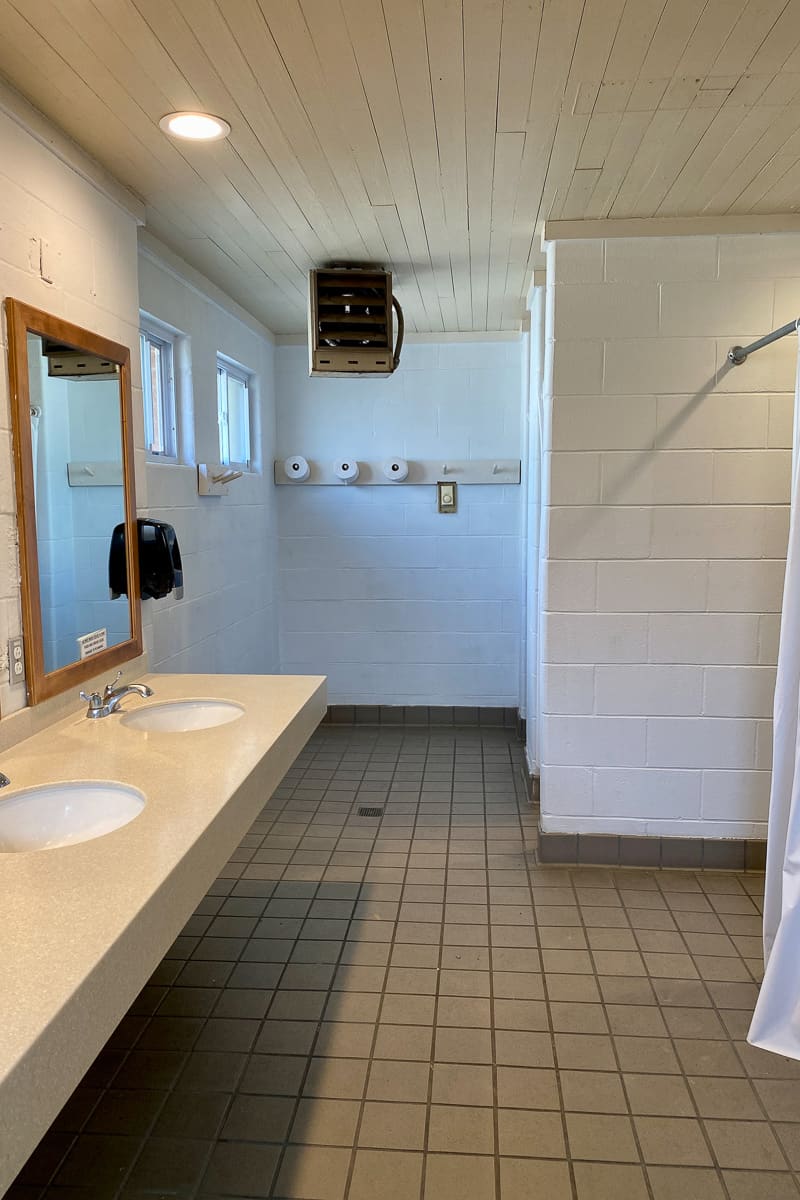
What didn't we get to experience? Well, there's a miniature golf course near the campground, as well as a couple of orienteering courses for testing out your map and compass skills!
Have you visited this state historic site? Let us know in the comments!

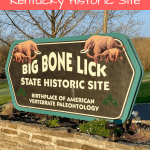
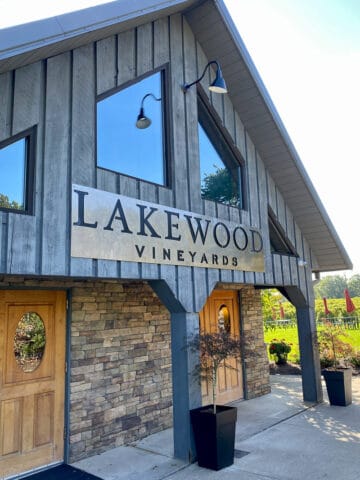

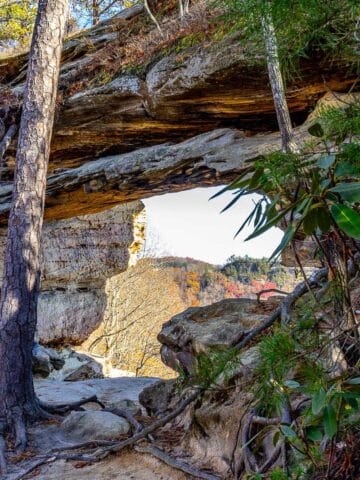

Leave a Comment: